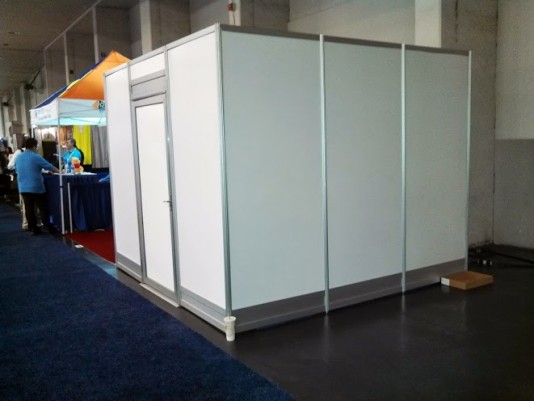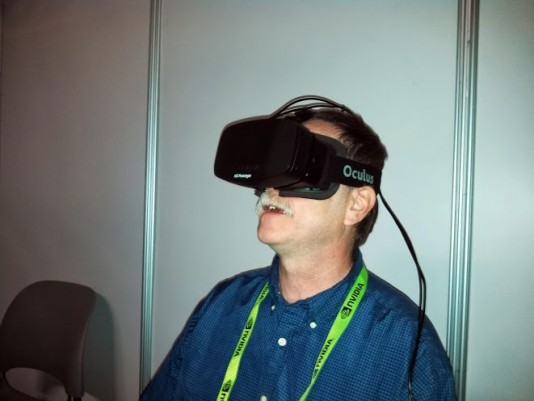Oculus is showing off the next version of its Rift virtual reality gaming goggles by appointment only.
In a back corner of the exhibition hall at this year’s Siggraph conference in Anaheim sits a 10×10 white box with a door, a temporary private office used at trade shows. To knock on the flimsy aluminum door causes the entire booth to rattle. “I was told to ask for Joe,” I said when someone opened the door. “This must be what entering a speakeasy during Prohibition was like,” I thought to myself.

Inside the poorly lit, cramped space is one tiny table, four chairs, one computer, and a rigged-up prototype of a visual device gamers can’t wait to get their hands on. It is the second generation Oculus Rift, a headset that provides gamers with an immersive 3D experience, a virtual reality view into the fantasy worlds created by today’s leading games.
The first generation Rift is currently on sale only to developers; Oculus has sold more than 18,000 units. The two guys staffing the Oculus booth/box are both developers looking to encourage other developers to take a look. It’s not a hard sell. To put on the headset is to be transported into the middle of whatever fantasy world is loaded up as a game. The player becomes completely immersed inside. Turn your head left or right, look up or down, or twist around and look behind you; the game is all around you.
Oculus began life as a Kickstarter project, and was wildly oversubscribed. The founders are now using the money to develop the second-generation Rift, which will display in 1080p HD resolution. The prototype I wore for the demo at Siggraph was assembled from off-the-shelf electronics, a couple of 3D printed plastic parts, and homemade straps. “As you can see, we have a lot of industrial design work ahead,” said Palmer Luckey, co-founder and one of 30 Oculus employees.
Oculus is being shy about a release date for the commercial version, saying only it will be months, not years, before the product is generally available. The first release will be for PC-based games; compatibility with consoles is a future possibility. The company knows seeing is believing, and will probably work with brick-and-mortar stores to fan the flames of desire in the gaming community. But after my few minutes wearing the Rift, as a non-gamer I can tell you word of mouth is the only advertising Oculus will need. I found the experience utterly fascinating, if at times a little overwhelming. I flew to the top of an active volcano and walked around a 20-foot tall monster. When you play a game on a flat screen, you cannot even come close to appreciating heights and distances as you can when wearing the Rift goggles. Oculus has an absolute hit on its hands.






